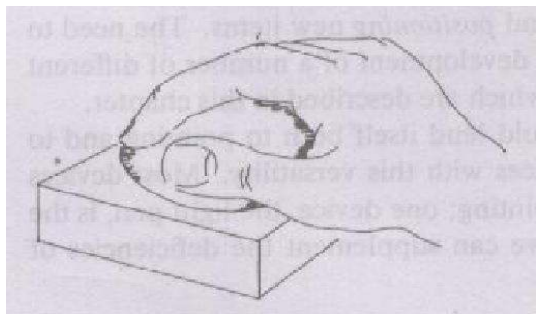List of Input Devices in computer
Mouse:
The mouse consists of a small plastic box resting on a metal wheel . It was developed originally at Stanford Research Institute. The wheel of the mouse is connected to two variable resistors that deliver analog voltage for every incremental rotation of the wheel. As the mouse is rolled around on a flat surface, its movement in two orthogonal directions is translated into rotation of the wheel.
These rotations can be measured by converting the analog voltages to digital values. The converted values may be held in registers accessible to the computer or written directly into the computer’s memory; the values are normally sampled 30 or 60 times a second by the computer. Pushbutton is mounted on top of the mouse, and the user can work them with his fingers as he moves the mouse. Ideally the computer should be able to read the position of these buttons whenever it reads the coordinates of the mouse

In addition to its simplicity and low cost, the mouse has the advantage that the user need not pick it up in order to use it-the mouse simply sits on the table surface until he needs it. This makes the mouse an efficient device for pointing, as experiments have shown. The mouse has some unique properties that are liked by some and disliked by others.
For example, if the mouse is picked up and put down somewhere else, the cursor will not move. also, the coordinates delivered by the mouse wrap around when overflow occurs; this effect can be filtered out by software, or can be retained as a means of moving the cursor rapidly from one side of the screen to the other. The mouse has two real disadvantages. It cannot be used for tracing data from paper, since a small rotation of the mouse or a slight loss of contact will cause accumulative error in all the reading, and it is very difficult to handprint characters for recognition by the computer. For these types of application a tablet is essential.
The following figure shows one button, two buttons and three buttons mouse.

Joystick
In fact, the forerunner of the mouse is a joystick. Here, as the name suggests, we have a stick (or a handle, to be more exact) can be moved in all possible direction.

The direction and amount of movement in that direction controls the amount of curser movement. Once the curser arrives at the desired position, clicking the buttons can choose the picture and any modification can be made.
In fact, the joysticks were originally used for video games (hence the name “joy” stick), but later on modified for the more accurate graphics requirements.
However, both the mouse and joysticks may appear a bit cumbersome for the new users. They find some difficulty in aligning the curser to the precisely desired positions.
Tracker Ball
The working principle of tracker ball is similar to that of mouse or joystick. In this device instead of holding the device ball inside the device, it will be hold in hand and rotated. According to the ball movement on the roller groove fixed with rollers for X, Y and Z –axis. According to the movements of the ball the rollers will move and they give the position of the pointer on the screen. The following figure shows tracker ball

